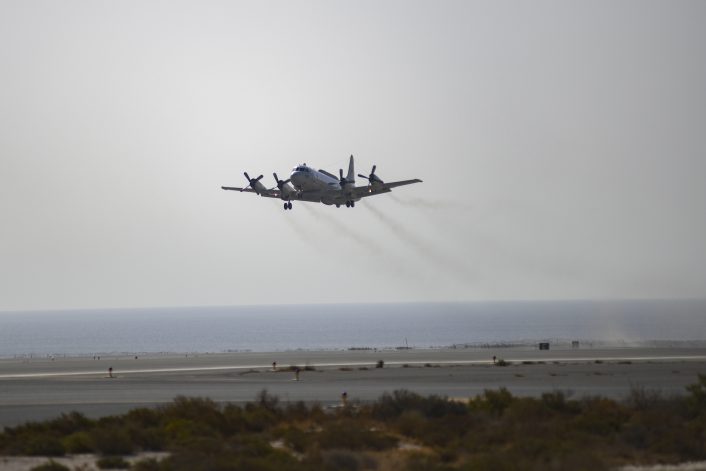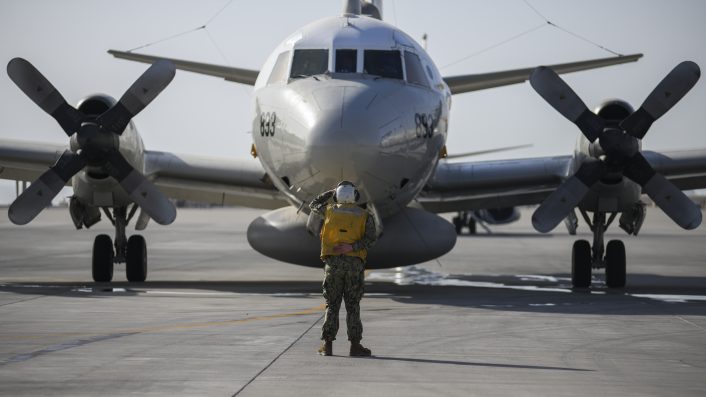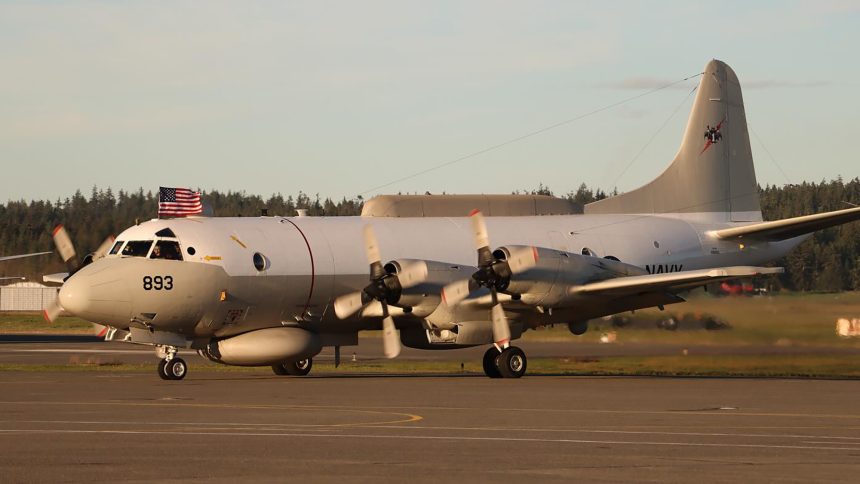The last EP-3E Aries II of VQ-1 “World Watchers” has completed its final operational mission and returned home.
On Oct. 29, 2024, after nearly sixty years of service, the EP-3E Aries II ISR (Intelligence Surveillance Reconnaissance) aircraft, made its final flight in the U.S. 5th Fleet’s AOR (Area Of Responsibility) as a detachment from the “World Watchers” of Fleet Air Reconnaissance Squadron (VQ) 1.
The U.S. 5th Fleet’s operational area spans approximately 2.5 million square miles of water, covering the Arabian Gulf, Gulf of Oman, Red Sea, parts of the Indian Ocean, and key choke points at the Strait of Hormuz, Suez Canal, and the Strait of Bab al-Mandeb.
As we reported earlier, crews of VQ-1 were initially scheduled to return to their home base at Naval Air Station (NAS) Whidbey Island, Washington in time to celebrate cease of operations by Sept. 30, 2024, but the ceremony had to be postponed for operational needs, first to Oct. 8, 2024 (with a deactivation scheduled for Mar. 31, 2025), and then to an undefined date.

Lt. Cmdr. Justin “Gump” Roberts, officer-in-charge of the VQ-1 detachment, said in a public statement: “It’s incredible to consider all those who have contributed to the EP-3 heritage over the past 55 years. The success of this platform is due entirely to our dedicated maintenance team and the exceptional ISR work of our aircrew. Being part of this legacy is an honor.”
Lt. Bradford “Chad” Holcombe, the aircraft commander, expressed pride in VQ-1’s history and his gratitude for being part of it. “From my first day with VQ-1, it was clear how much pride every member has in the platform, mission, and the effort required to execute it anytime, anywhere. Flying the final mission is a privilege,” he said.

Capt. Dennis “Rudy” Jensen, Commodore of Task Force 57, has been around the P-3 since 1979:
“My father was a P-3 pilot during the Cold War, and I’ve flown the variants of the same aircraft since 2002. Few other airplanes are as ‘time-tested & mother approved’ as the P-3,” Jensen said. “Its longevity and ability to operate from remote locations in austere environments for over half a century is a testament to those who designed, built, maintained and operated it. Much like the ever changing platforms onboard the flight deck of an aircraft carrier, the mission systems inside the EP-3E have evolved over time. The ability to evolve has enabled the EP-3E to remain viable and effective through today.”
After a 30-day extension of its scheduled tour of duty and the successful completion of the type’s last deployment, the VQ-1’s EP-3E BuNo 159893 returned to NASWI on Nov. 6, 2024. It was preceded by 161410 which returned from Souda Bay on Nov. 1, 2024.
Aircraft “893” will be retired and delivered to the 309th Aerospace Maintenance and Regeneration Group (AMARG) at Davis-Monthan Air Force Base in Arizona, where it will be stored in the so-called “Boneyard.” As reported, VQ-1, has already retired some of its oldest airframes, including the aircraft BuNo 156511, the EP-3E involved in a collision with a Chinese Navy J-8 fighter jet off China on April 1, 2001, in what became known as the “Hainan Incident.”
EP-3E sundown
The EP-3E Aries II is a signals intelligence platform that has served for decades, gathering intelligence on foreign communications, electronic emissions, and troop movements. The crew of 24 includes pilots, tactical evaluators, and cryptologic technicians.
The type first came into prominence in the late 1960s and has been continuously upgraded over the years to keep up with advancing technology. The aircraft, the U.S. Navy’s only land-based reconnaissance asset, was upgraded from being purely a signals intelligence (SIGINT) aircraft to a Multi-Intelligence platform equipped with a bunch of receivers and high-gain antennas which allow it to intercept a broad spectrum of electronic emissions deep within hostile territories. The crew processes and merges the collected intelligence and distributes the information for use in various military applications such as threat detection, air defense suppression, battlefield awareness, and anti-submarine warfare.
As we have reported throughout the years, the EP-3E has operated near all the world’s main hotspots, including Libya, Syria and the Caribbean Sea, where the spy plane has often been intercepted by Russian and Chinese fighter jets in tense aerial encounters. The type gained particular notoriety after the already mentioned international incident on April 1, 2001, when it was forced to make an emergency landing on Hainan Island, China, following a collision with a Chinese fighter jet. The crew and aircraft were detained for 11 days.
EP-3E Replacement
The EP-3E Aries II will be replaced by the Northrop Grumman MQ-4C Triton. The Triton is a high-altitude, long-endurance unmanned aerial system that supports a “wide range” of missions, including maritime patrol, signals intelligence and search and rescue. The MQ-4C Triton, which operates at a higher altitude and has a longer endurance than the EP-3E, also incorporates simultaneous multi-intelligence sensor operations and can exchange data with U.S. and allied sea, air, land and space-based assets for optimal strategic situational awareness.
The VUP (special projects patrol squadron) will take over these responsibilities with the new Triton which has already been deployed to key bases all around the world, including Guam, NAS Sigonella, and to the Middle East.









